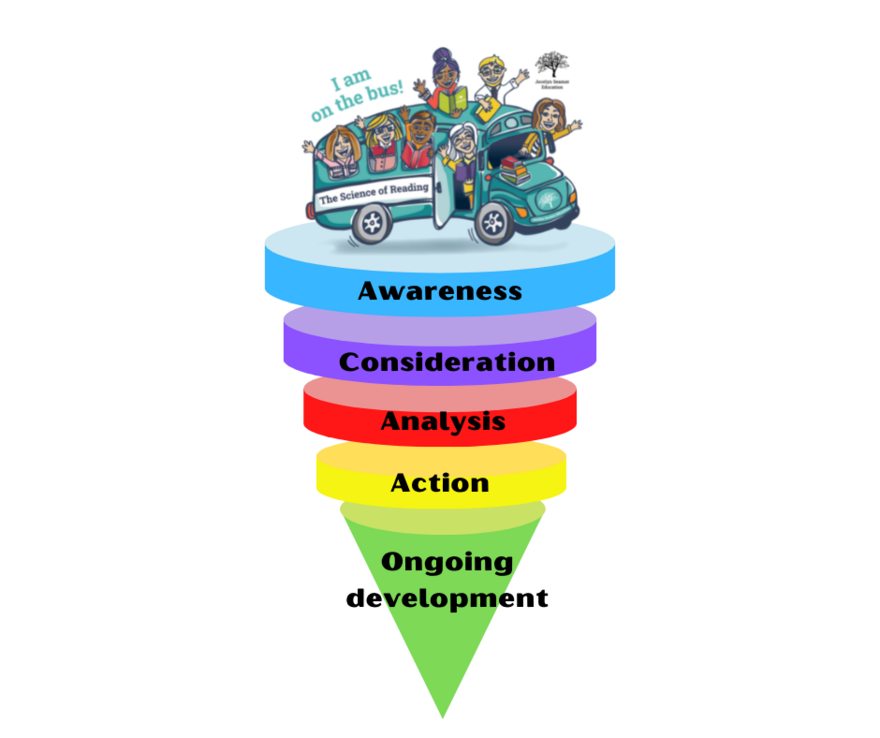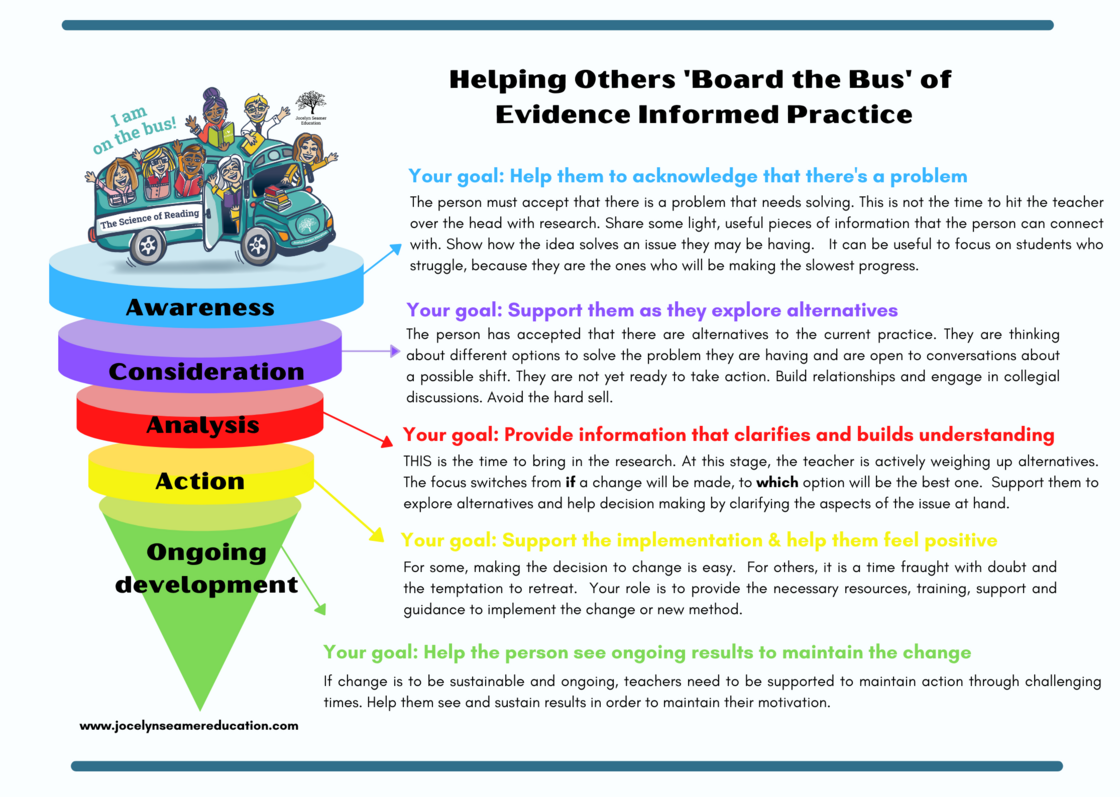The Invisible Bridge

Whether we are a school leader, instructional coach or colleague, when we are working to support our teams to develop practice, it can be surprising to us when they miss the point on things that seem so very simple. It leads us to reflect on why others can’t seem to let go of the things that we have been itchy to jettison for years, often scratching our heads and thinking, “I just don’t get it”. I can tell you with confidence, that it’s not a lack of intelligence, commitment or caring on the part of the teacher that leads to this challenge. Instead, it is more than likely that the person needs help to cross the ‘invisible bridge’ from where they are now, to where we would like them to be. The invisible bridge can be described as the knowledge or understanding that someone needs to help them be ready to make a decision or commit to an action. It’s called invisible because, very often, the person won’t even know what it is that they don’t know. It is also invisible because it may not be obvious to us either.
Let’s think about some areas that teachers find difficult to ‘let go’ of:
- Sight word programs
- Predictable texts
- Group rotations and literacy stations
- Tracing and workbooks for handwriting
- Guided Reading
- Compartmentalising literacy instruction (they may think that they have to teach sounds for reading and spelling separately)
- Benchmark assessment
- Weekly spelling tests
These cornerstones of many teachers’ classrooms can be as hard to shift as a red wine stain on a white shirt. But why? The answer in helping to shift thinking and therefore action, is the invisible bridge. In other words, “what does the person need to know or understand to help them be ready to take action or engage in change?”
Marketers talk about a journey that consumers undertake when considering a purchasing decision. Teachers also undertake a similar journey in shifting practice. For some, the decision to make the shift to decodable instead of predictable texts is a simple and quick one. These teachers have had a sense that they were looking for something else for a long time and when they come across the decodables think, ‘Aha! That’s what I was looking for!’ It’s not that they are more committed teachers or better human beings than their colleagues, they were just ready for the change. For others, it’s a slower process. Consider the following outline of a change journey.

You can download the PDF here.
The question that we need to ask ourselves is, “what is the invisible bridge that helps people move from awareness to action?”
Here are some ideas to help.
Awareness – the first step is acknowledging that there is a problem that needs solving. If we don’t perceive that there is a challenge and that we can do something about it, we won’t go any further towards action. Data is your friend here. A good question to ask is “Who is not being served by our current teaching methods?”
Bridge to cross – there is a problem and change is necessary.
Consideration – for those of us already on the bus, it is really tempting to go in hard and ‘jump’ people with research and facts. DON’T! This will simply overwhelm the person and make them feel confronted. When someone is considering that a change might be possible, we need to build relationships, share simple suggestions, highlight the results and experiences of other teachers and schools. Adopt a softly, softly approach, showing that alternatives are simple and not overwhelming.
Bridge to cross – alternatives to current practice exist that are possible, effective and will help me to feel successful in my teaching. Change is not being asked of me for the sake of change. I trust those around me.
Analysis – occurs when the person has absolutely accepted that change is a must. Their thinking moves, not from if a change is needed, but when and how. THIS is where the evidence comes in. They are looking for facts, certainty and clarity. They are ready to dig deep, look closely and be open.
Bridge to cross – I understand what the evidence says and know why I need to take the action asked of me. I can see the connection between the problem and the solution the change will bring.
Action – The person is ready to say, “Yes!”. They may not be feeling particularly confident, but are willing and able to implement something new. People can still be feeling quite vulnerable here, so our job is to support, guide and set them up for success. It is easy to get spooked when we are about to or have just taken action. Make sure you are there to support your team so that they don’t turn to the book of blackline masters in a moment of self-doubt.
Bridge to cross – I am going to be ok. I understand the steps that will happen as I make the change, what is expected of me and how I am going to be supported. I know that there will be tricky days, but that I have a team or person who has my back.
Ongoing development – Our roles don’t cease when the training is done and the change is implemented. Without visible results and ongoing support and guidance, many teachers will retreat back into old habits when the going gets tough. Continue to provide coaching, support and encouragement beyond the initial spark of excitement that comes when things are new.
Bridge to cross – Results come from consistent implementation with fidelity. I can’t water down the approach or program. I understand why I need to do what I am being asked and can see how this impacts on results.
When implementing whole school change, it simply isn’t possible to allow every teacher to come to the key actions in their own time. However, being able to pinpoint where they may be sitting may just help you to meet their needs better and help them come on board quicker, easier and with more of an open mind.
Would you like to know when the next Inspiring Change post is published? Pop your name and email into the box here.


 Inspiring Change
Inspiring Change
1 comment
I just love the way you are able to make complex concepts so easy to understand.
Leave a comment
Please log in or register to post a comment